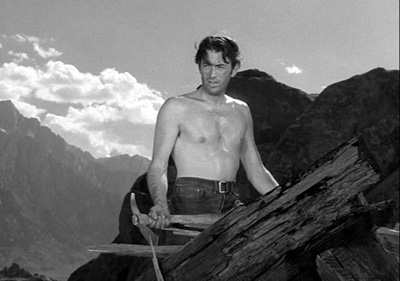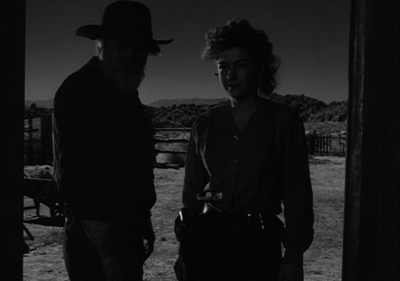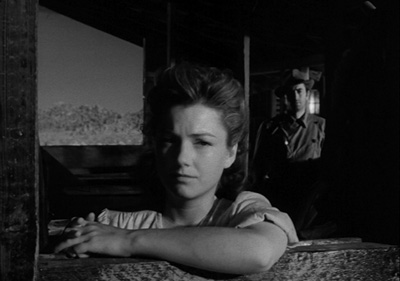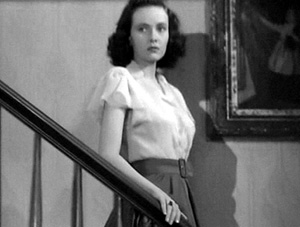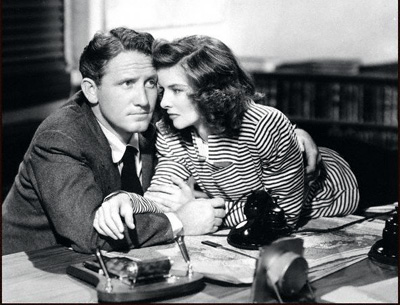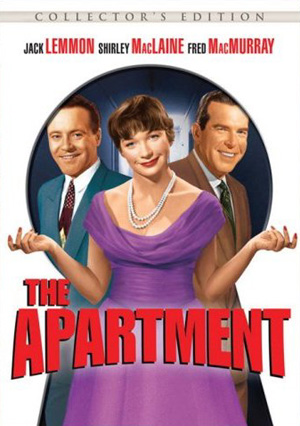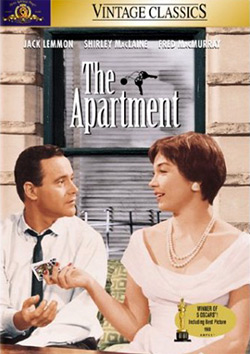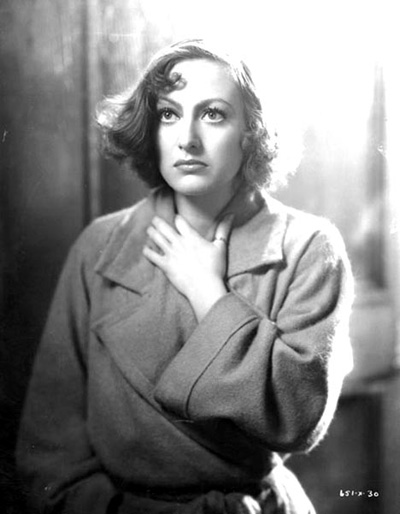
To get into the spirit for tonight’s pre-code marathon on TCM, I thought I would discuss one of my favorite movie from that era, Ernst Lubitsch’s Design For Living (1933). I admit that I don’t know much about pre-code films or their history, but I do know a great film when I see one. And not only is Design For Living great, but it’s incredibly sexy and fun as well. It’s risque plot begs the question: is it possible for two men to share a woman and live happily ever after? While the idea of a menage a trois is common knowledge by today’s standards, it had to be a shocking topic for 1933!
 The plot centers around two friends, playwright Tom (Fredric March) and painter George (Gary Cooper) who meet a free-spirited commercial artist, Gilda (Miriam Hopkins) on a train. Naturally, both men fall in love with Gilda and unbeknownst to each other, are having a physical relationship with her. Instead of choosing one, Gilda decides that the best solution is to forget about sex. Yeah, like that’s going to happen. Instead, Gilda has separate dalliances with both George and Tom and when she sees that she’s tearing their friendship apart, she runs off and marries her humorless boss, Max Plunkett (Edward Everett Horton). Soon, Gilda finds herself in an unhappy situation, surrounded by Plunkett’s boring, snooty friends while forced to play silly dinner games and sing even siller songs. It’s then up to Tom and George to rescue her from the boredom of Plunkett’s home.
The plot centers around two friends, playwright Tom (Fredric March) and painter George (Gary Cooper) who meet a free-spirited commercial artist, Gilda (Miriam Hopkins) on a train. Naturally, both men fall in love with Gilda and unbeknownst to each other, are having a physical relationship with her. Instead of choosing one, Gilda decides that the best solution is to forget about sex. Yeah, like that’s going to happen. Instead, Gilda has separate dalliances with both George and Tom and when she sees that she’s tearing their friendship apart, she runs off and marries her humorless boss, Max Plunkett (Edward Everett Horton). Soon, Gilda finds herself in an unhappy situation, surrounded by Plunkett’s boring, snooty friends while forced to play silly dinner games and sing even siller songs. It’s then up to Tom and George to rescue her from the boredom of Plunkett’s home.
While the “Lubitsch Touch” may not be for everyone, it’s precisely what makes Design For Living so fantastic. It’s a light, sophisticated sex farce that never crosses the line into smut. And while there are serious turns in the plot, they mostly revolve around the emotions of Tom, George and Gilda–never are they made to feel guilty for enjoying sex. It’s who they’re enjoying it with that’s the problem. But what makes Design For Living truly beautiful is that the main characters are friends first, and romantically involved second (a very close second, I might add). It’s clear from their banter on the train that they enjoy each other’s company. And when Gilda tells the boys to forget about sex, she turns it into something positive by critiquing their work instead and turning them into successes. Of course, none of the parties involved can go without physical comforts for long, but isn’t that what makes the movie so much fun?

Both Fredric March and Gary Cooper are perfect in their roles. Not only do they have amazing chemistry with Hopkins, but they play off each other beautifully as well. The comic banter between them is easy and light and  you understand why their friendship has endured for eleven years. It’s also interesting to note that in the original Noel Coward scripted play, it was hinted that Tom and George were bisexual. Even though the Hays Code was lax, the powers that be insisted that Design For Living be cleaned up for the screen version. Hollywood wasn’t that liberated. Enter screenwriter Ben Hecht, who wound up rewriting all the dialogue except for one line (“For the good of our immortal souls!”), while keeping the plot the same. All traces of bisexuality between Tom and George were written out–or was it? In the scene where George finds out that Tom and Gilda have spent the night together, he angrily tells them, “It’s hard to believe I loved you both!” While the line was meant to express a platonic love between Tom and George, I’m sure some people were thinking along the lines of the original Broadway version. I know I was (but that’s mostly because I have a filthy mind). After all, Tom and George lived together before Gilda came along and after Gilda leaves them, they go off to China together. March and Cooper are not affectionate towards each other, but it’s hard not to think that there was something more to their characters, especially in such a sexually charged movie. I’m sure if Design For Living was re-made today (Heaven forbid), the writers would throw in some sexual tension and jealousy between Tom and George based on their previous, pre-Gilda relationship.
you understand why their friendship has endured for eleven years. It’s also interesting to note that in the original Noel Coward scripted play, it was hinted that Tom and George were bisexual. Even though the Hays Code was lax, the powers that be insisted that Design For Living be cleaned up for the screen version. Hollywood wasn’t that liberated. Enter screenwriter Ben Hecht, who wound up rewriting all the dialogue except for one line (“For the good of our immortal souls!”), while keeping the plot the same. All traces of bisexuality between Tom and George were written out–or was it? In the scene where George finds out that Tom and Gilda have spent the night together, he angrily tells them, “It’s hard to believe I loved you both!” While the line was meant to express a platonic love between Tom and George, I’m sure some people were thinking along the lines of the original Broadway version. I know I was (but that’s mostly because I have a filthy mind). After all, Tom and George lived together before Gilda came along and after Gilda leaves them, they go off to China together. March and Cooper are not affectionate towards each other, but it’s hard not to think that there was something more to their characters, especially in such a sexually charged movie. I’m sure if Design For Living was re-made today (Heaven forbid), the writers would throw in some sexual tension and jealousy between Tom and George based on their previous, pre-Gilda relationship.
 The character of Max Plunkett is Design For Living‘s authority figure and the exact kind of attitude that the saucier pre-code movies thumbed their nose at. He’s awfully fond of the phrase, “Immorality may be fun, but it isn’t fun enough to take the place of one hundred percent virtue and three square meals a day!” which describes the kind of guy he is. Yawn. Played by Edward Everett Horton (one of my favorite character actors from the 30’s), Plunkett is the kind of guy who thinks after dinner games of 20 Questions and “Animal, Vegetable or Mineral?” are a good time. He’s the symbol of stodgy monotony, while Tom, George and Gilda represent a more carefree attitude. Plunkett is obsessed with work and while the three want to be successful in life, it shouldn’t come at the loss of their happiness.
The character of Max Plunkett is Design For Living‘s authority figure and the exact kind of attitude that the saucier pre-code movies thumbed their nose at. He’s awfully fond of the phrase, “Immorality may be fun, but it isn’t fun enough to take the place of one hundred percent virtue and three square meals a day!” which describes the kind of guy he is. Yawn. Played by Edward Everett Horton (one of my favorite character actors from the 30’s), Plunkett is the kind of guy who thinks after dinner games of 20 Questions and “Animal, Vegetable or Mineral?” are a good time. He’s the symbol of stodgy monotony, while Tom, George and Gilda represent a more carefree attitude. Plunkett is obsessed with work and while the three want to be successful in life, it shouldn’t come at the loss of their happiness.
 I know it’s said that Horton was gay in real life, but I never got that kind of over-the-top flamboyancy from him, like I did with Franklin Pangborn. In so many movies, Horton was constantly married to women, who like him, had a sense of asexuality. You could never imagine them having sex–maybe the most you’d see is a chaste kiss, but that’s about it. Horton’s asexuality is what makes Plunkett so great–despite his love for Gilda, you could never, ever imagine him satisfying her like Tom or George could, nor could you imagine Gilda getting all worked up over him. Even his attempts at shopping for a bed are dull–Plunkett pulls out a tape measure to see the width of the bed, before measuring each of their shoulders! Horton puts in a fine dramatic performance here, especially in the post-marriage bedroom scene where he kicks the tulips after having a passionless wedding night.
I know it’s said that Horton was gay in real life, but I never got that kind of over-the-top flamboyancy from him, like I did with Franklin Pangborn. In so many movies, Horton was constantly married to women, who like him, had a sense of asexuality. You could never imagine them having sex–maybe the most you’d see is a chaste kiss, but that’s about it. Horton’s asexuality is what makes Plunkett so great–despite his love for Gilda, you could never, ever imagine him satisfying her like Tom or George could, nor could you imagine Gilda getting all worked up over him. Even his attempts at shopping for a bed are dull–Plunkett pulls out a tape measure to see the width of the bed, before measuring each of their shoulders! Horton puts in a fine dramatic performance here, especially in the post-marriage bedroom scene where he kicks the tulips after having a passionless wedding night.
But what really makes the movie is the character of Gilda (pronounced Jil-da). Miriam Hopkins shines in the role, bringing to life a complex woman who is not only comfortable with her sexuality, but places Tom and George’s friendship above her own happiness. The last thing she wants is for them to hate each other. Throughout the film, Gilda tries many different things in order to restore peace between Tom and George: she becomes “den mother” to their pursuits and then marries Plunkett so that neither man can have her. But in the end, Gilda cannot deny her true happiness anymore and neither can Tom or George. They need her as much as she needs them, jealousy be damned.
Hopkins runs a gamut of emotions throughout the film: she’s flirty and coy, but serious and passionate when she needs to be. It would be hard to like Gilda if Hopkins played her as a stupid, shallow and coarse girl, but she doesn’t. If anything, Gilda is a revelation–she’s a sexually liberated woman in the 1930’s, an idea that wouldn’t be popular until almost 40 years later. Gilda only wants to bring out the best in both of her men. She’s not desperately seeking approval from Tom or George and isn’t afraid tear down their egos and criticize their work (“Rotten!”). But she’s willing to succumb to passion when the time is right. Gilda wears her emotions on her sleeve. In one scene, she tells Tom that he haunted her “like a nasty ghost” and that “on rainy nights, I could hear you moanin’ down the chimney.” She’s open and honest. There’s no false pretenses with her and not only is it refreshing to see, but it’s fun to watch. It makes you root for Gilda and hope that she gets both her men at the end of the story. These characters are too nice and too much fun to be left broken hearted at the end.
Design For Living also has it’s share of extremely sensual moments, which are sprinkled through the film. The innuendo is hard to miss. For example, take the scene where George and Gilda are alone together in their apartment. After pacing back and forth a few times, George grabs Gilda, proclaims his love and kisses her. In return, Gilda walks over to the dusty couch, lazily stretches the length of her body across it and purrs, “It’s true we had a gentleman’s agreement–but unfortunately, I am no gentleman.” The scene fades to black. It leaves the power of one’s imagination to figure out what happened next, which is so much sexier than showing the physical act of lovemaking itself.
 In another scene, Tom visits the apartment of George and Gilda, only to find that Gilda still has his old typewriter. Despite promising to take good care of itwhen he left for London, Tom finds that’s it’s now rusted out. When Gilda enters the room, the sexual tension between them becomes unbearable. They can’t take their eyes off each other and the typewriter becomes a metaphor for their relationship. As Gilda starts fiddling with the machine, she and Tom have the following conversation:
In another scene, Tom visits the apartment of George and Gilda, only to find that Gilda still has his old typewriter. Despite promising to take good care of itwhen he left for London, Tom finds that’s it’s now rusted out. When Gilda enters the room, the sexual tension between them becomes unbearable. They can’t take their eyes off each other and the typewriter becomes a metaphor for their relationship. As Gilda starts fiddling with the machine, she and Tom have the following conversation:
Tom (accusingly): You didn’t keep it oiled.
GIlda: I did for awhile.
Tom: The keys are rusty. The shift is broken
Gilda seductively slides the carriage back and forth, causing the typewriter to ‘ding’. Tom and Gilda look at each other wide-eyed with excitement.
Gilda (excitedly): But it still rings!
March walks over to Gilda, where they meet face-to-face.
Gilda (softly): “It still rings.”
Tom: “Does it?”
Fade to black.
It’s one of the best moments in the entire film and that’s saying a lot, because there are so many high points to begin with. And speaking of which, the closing scene is also fantastic. After Tom, Gilda and George escape Plunkett’s mansion in a taxi, Gilda then declares that she wants to go back to Paris and have some fun–but not before giving each guy a big kiss on the lips. And we know exactly what kind of fun she wants. After all, she’s nestled in between Fredric March and Gary Cooper–who could blame her for wanting to have “fun”?
When I first got into classics, I could never understand what the fuss about pre-codes was all about, but after seeing a few, I do understand. Not only are they fun, but it’s nice to see endings where the main character isn’t severely punished for their actions. You know, if Design For Living had somehow been made after 1934, not only would a good chunk of the snappy dialogue have been eradicated, but one of the main characters would have had to die in order for moral sanity to rule the day. I’m guessing that Gilda would have received the brunt of the Code’s moral abuse. After all, she enjoyed sex and everyone knows that in post-1934 films, any woman who enjoys sex is a harlot. And don’t even get me started on separate beds!
I’ve always wondered what the movies would have been like if the Hays Code hadn’t been enforced in 1934. Would movies have gotten sexier and more violent? Hollywood is not a place where they know how to draw the line. For every good movie that’s released today, there’s another film that’s filled with tons and tons of gore and sex. I know I sound like a prude saying this, but my idea of a good time isn’t watching someone slice off their own arm or kill their beloved puppy for the sake of shock value. You don’t need shock value to enjoy a movie. I like sensical plots and good character development and that’s why classics, pre or post code, had those qualities in spades. Once the hammer of the Hays code came down, Hollywood had to clean up their act. But it’s not as though the quality of the movies went down–if anything, they went up.
Still, I’m thankful that so many pre-code movies still exist and I’m happy whenever I find a really good one, such as Design For Living (which is available in the 5-disc Gary Cooper Collection). I’m looking forward to the pre-codes and new documentary that TCM is offering up tonight because with every new film I watch, I gain new insights into the past and become more appreciative of the present. And in my opinion, that’s what loving Classic Hollywood is all about.
Links:
• A review and more background info on Design For Living via the Lubitsch site.
• The outlines of the Hays Code from Wikipedia
• A very good pre-code article at GreenCine



